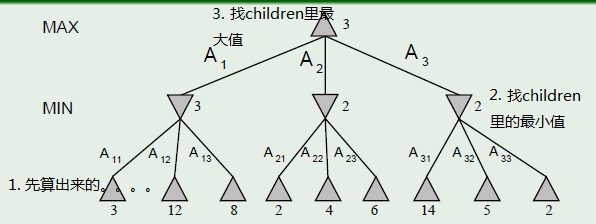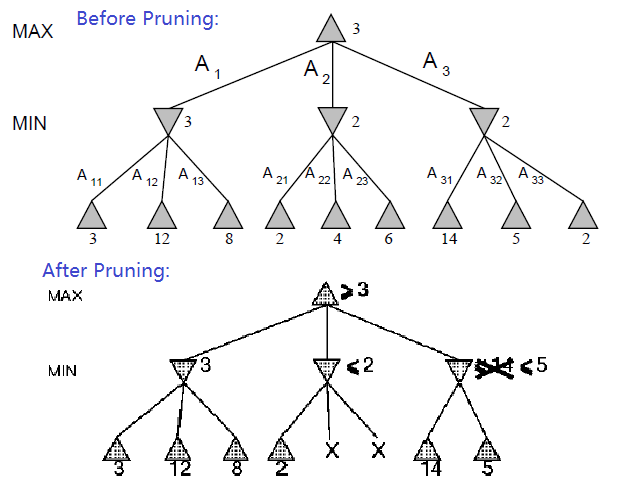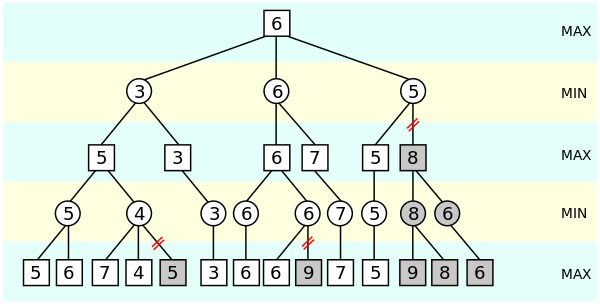Definition
For every two-person, zero-sum game with finitely many strategies, there exists a value V and a mixed strategy for each player, such that
- Given player 2’s strategy, the best payoff possible for player 1 is V, and
- Given player 1’s strategy, the best payoff possible for player 2 is −V.
Equivalently, Player 1’s strategy guarantees him a payoff of V regardless of Player 2’s strategy.
Put it in a simple way: MAX tries to max the utility, and MIN try to min it.

Steps
- Have a heuristic evaluation function, which gives a value to non-final game states.
- Generate the values down to terminal states.
- Min-max calculate the utility, like this:

An example
Othello game:
A player can place a new piece in a position if there exists at least one straight (horizontal, vertical, or diagonal) occupied line between the new piece and another piece of the same kind, with one or more contiguous pieces from the opponent player between them.
After placing the new piece, the pieces from the opponent player will be captured and become the pieces from the same player.
The player with the most pieces on the board wins.
First, the heuristic evaluation function:

Now, generate terminal level utility values:

Now, do min-max algorithm:

Pruning
The performance of the naïve minimax algorithm may be improved dramatically, without affecting the result, by the use of alpha-beta pruning.
Alpha–beta pruning is a search algorithm that seeks to decrease the number of nodes that are evaluated by the minimax algorithm in its search tree.

It works when you evaluate the tree left-to-rigth. Considering under the same parent, once you found any number that is largest then the smallest-found-so-far, in the MAX level, you can skip this node. Example:

The pruned values won’t influence the final result.